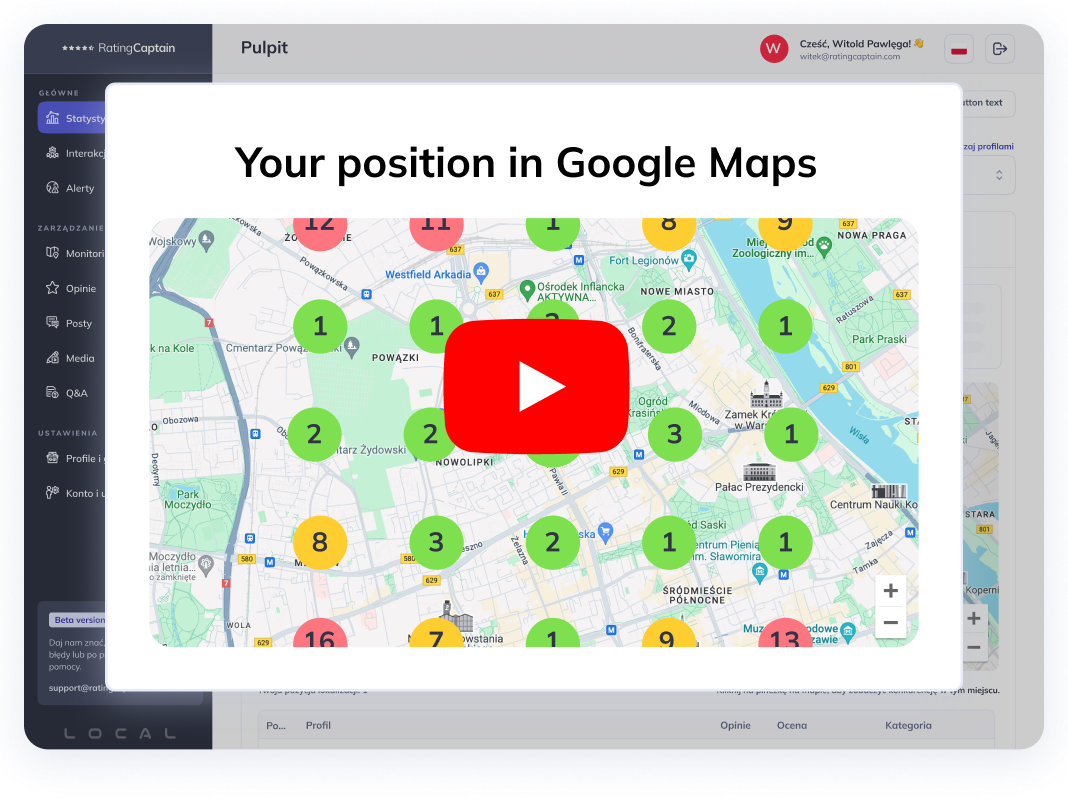

How to gather customer reviews about a company - an effective request for recommendations

Table of contents
If you are reading this article, you probably already know something about reviews and their impact on a potential customer's purchasing decisions. Now it's time to effectively gather customer reviews and opinions. However, before you start asking for reviews, you need to understand how to handle both satisfied and dissatisfied customers.
Customer reviews about the company - why is it worth collecting them?
Above all, reviews are a source of knowledge for both consumers and the company itself. You have probably read reviews before using a company's offer. Your customers behave in the same way. They want to be sure that choosing your company is the right decision. Some of them not only read reviews, but also compare them with reviews about your competition.
What do reviews bring to you? Knowledge about the expectations and needs of your target audience. Your customers will tell you what else you can work on to increase their satisfaction. Customer recommendations are also the best advertising. You need to know that reviews work on the principle of social proof. Therefore, using reviews on your website or on social media can reinforce the recipient's belief in the right choice.
How to collect customer reviews?
First of all, you need to have company accounts on review platforms. It can be Google My Business, a Facebook fan page, a company profile on Opineo, TripAdvisor, etc. When choosing a platform, it is worth considering your industry and whether customers actually spend time on that platform.
Some of your customers will write a review or leave stars on their own. However, most of the time, it will be dissatisfied customers who do so. Satisfied customers usually need to be encouraged. You can do this through email, SMS, or even a pop-up on the order summary page. Many companies also conduct Net Promoter Score (NPS) surveys, which is an indicator of customer satisfaction and the likelihood of recommending the company, product, or service.
Why doesn't a satisfied customer want to write a review?
For many customers, a smooth purchasing process, as well as delivery or product usage, are obvious. They don't consider it something extraordinary to share their opinion about. It also happens that in their excitement about writing a positive review about a company, a service they used, or a product they purchased, they forget to do so. If they don't do it right away, they will most likely forget about it in the midst of other things when their enthusiasm starts to fade.
A satisfied customer often doesn't know that their opinion means anything to the company. On the other hand, an unsatisfied customer has a mission to warn the world about your company. Therefore, it is worth emphasizing the importance of every review, and the best way to do it is by responding to customer reviews.
What if the customer is not satisfied?
It is a fact that an unsatisfied customer is willing to share their opinion even without being asked. Moreover, if their dissatisfaction is significant, they will not limit themselves to one review platform and will gladly share it on social media as well. In the age of the Internet, a negative review can quickly spread online, leading to a reputation crisis.
This can be prevented by responding promptly to negative comments. Furthermore, very often a customer expresses their dissatisfaction by contacting the company, and only when such contact does not yield results, they decide to share their opinion online. Unfortunately, in such a situation, the company itself contributes to the emergence of an unfavorable review, which may include not only negative words about the product or service but also information about poor customer service or even accusations of fraud.
How to ask for a review?
Most often, collecting reviews is done through email. Contrary to appearances, creating a review request is not that simple. First and foremost, you need to know who your customers are and tailor the message to them. The review request should be consistent with the company's visual communication and narrative. Customers receive many invitations to leave reviews from various companies, so your logo is one of the important elements. But what can you do to make customers not only leave 5 stars in the rating form but also write a few words about the service or product?
How to write an effective email requesting a review?
When creating an invitation, it is worth considering a few factors that can significantly increase the effectiveness of collecting ratings and reviews.
1. Email subject - it largely determines what will happen next.
The subject should intrigue, encourage opening, and stand out from other messages. It should not exceed 60 characters so that it can be fully read by the recipient.
2. Personalization - reduce the distance between the brand and the customer.
Instead of addressing "dear customers," address them directly as Ms. Monika or Mr. Paweł.
3. Argumentation - why should the customer fulfill your request?
Explain that you are striving to improve your offer, and that's why the customer's opinion is important to you.
4. Visual appearance of the invitation - make sure the invitation is neat and does not overshadow the message.
Treat sending review invitations as another step in building brand image and awareness.
5. Responding to reviews - react to all reviews.
Also, prepare a template response to reviews. Remember to ask for feedback when responding to a neutral or negative review, but without using negatively charged words. So, don't ask the customer what they didn't like, but ask for suggestions on what you can improve. Always remember to thank for the review regardless of its tone.
In addition, you can encourage customers to leave reviews by informing them that they will receive a discount on their next purchase after adding a review, for example. Note: never state that writing a positive review is a condition for receiving a reward. It can cause many problems.
Summary - if you want a customer to write a review, you have to ask for it
At the beginning, invite customers to leave reviews on Google Maps, as that's where consumers most often read reviews about companies.
Remember that your customer receives many similar requests, so adding a review should not take too much time. Once you have collected testimonials, be sure to showcase them on your website. Positive product reviews will not only influence the purchase decision but also affect your position in Google search results.
Please rate this article
Try our new
Local SEO tool
Manage and track visibility of your
Google Business Profiles

